PERENNIALS > DIASCIA
Reviewed By ROY NICOL

Roy is a Professional Gardener and Horticultural Consultant, specialising in large garden year-round maintenance and garden development. He is an RHS Master of Horticulture and uses his research in the application of no-dig methods in ornamental garden settings. Roy has been a Professional Gardener for more than six years and is a member of the Chartered Institute of Horticulture, Professional Gardener's Guild and Association of Professional Landscapers (Professional Gardener).
IN THIS GUIDE
DIASCIA GUIDES
Diascia or ’Twinspur’ is a pretty little wildflower from South Africa with very appealing features that other, better known, small flowering plants would find hard to match.
Diascias are half-hardy annuals or semi-evergreens, usually of a spreading type, that bear oodles of tiny highly distinctive flowers.
Each flower has two prominent spurs sticking out from the rear and as gentle little charmers, diascias are suitable for numerous garden purposes.
This small plant is of the no-care, sow-and-grow type.
It needs no special soil or maintenance and is remarkably pest-resistant and disease-free.
Almost all its varieties form a neat, even mat, but are not invasive, and can be used for many different garden purposes.
It is for such convincing reasons that diascia’s popularity is on a sharp rise in the UK.
Overview
| Botanical Name | Diascia spp. |
| Common Name(s) | Twinspur |
| Plant Type | Perennial / Annual |
| Native Area | South Africa |
| Hardiness Rating | H3/H4 |
| Foliage | Semi-Evergreen |
| Flowers | Small cup or bell-shaped flowers that ranges in colour from peachy tones to orange, white and pink |
| When To Plant | March – June |
| When To Prune | March – April |
Sunlight
Preferred
Full Sun or Partial Shade
Exposure
Sheltered
Size
Height
0.1 – 1M
Spread
0.1 – 0.5M
Bloom Time
Summer / Autumn
Soil
Preferred
Most fertile soils
Moisture
Moist but well-drained
pH
Any
Diascia is a member of the family Scrophulariaceae.1Diascia fetcaniensis. (2019, August 9). Cambridge Botanic Garden. Retrieved March 15, 2023, from https://www.botanic.cam.ac.uk/the-garden/plant-list/diascia-fetcaniensis/
This botanical family includes genera whose flowers are bilaterally symmetrical, like pansies, rather than radially symmetrical or asymmetrical.
These plants are of three kinds of habit: mat-forming, bushy, and upright.
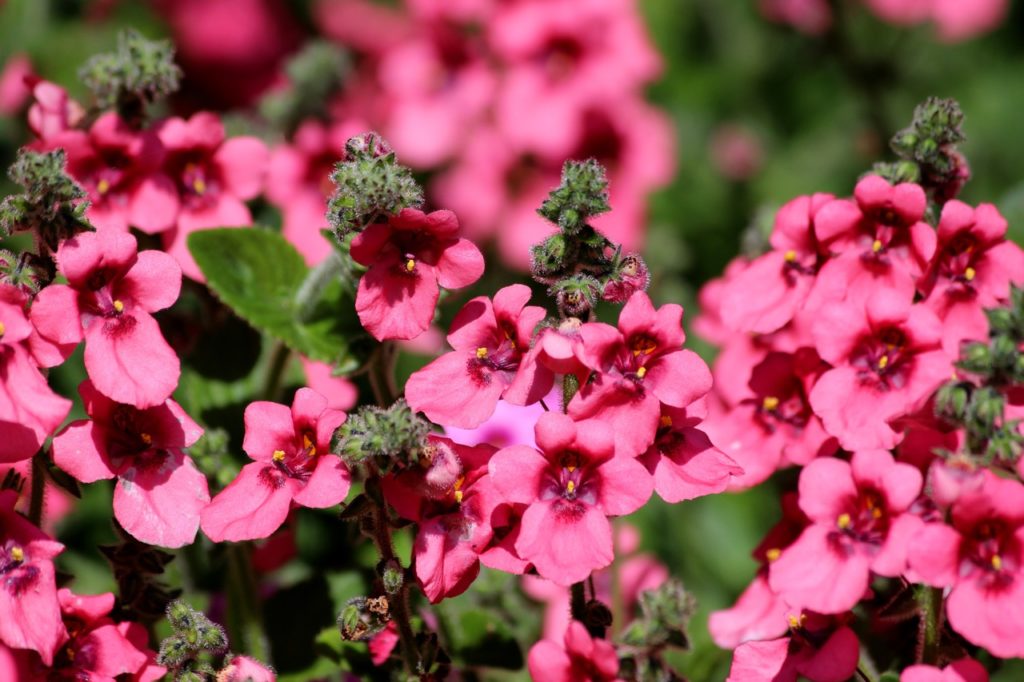
The trailing, mat-forming types are the most common and these are the types that generally come to mind when one talks about diascia.
These grow to only 15-25cm in height, but with twice the spread.
In contrast, the bushy and upright forms reach heights of 0.5-1m.
Diascias are herbaceous plants that are annuals or semi-evergreen perennials depending on your location in the United Kingdom.
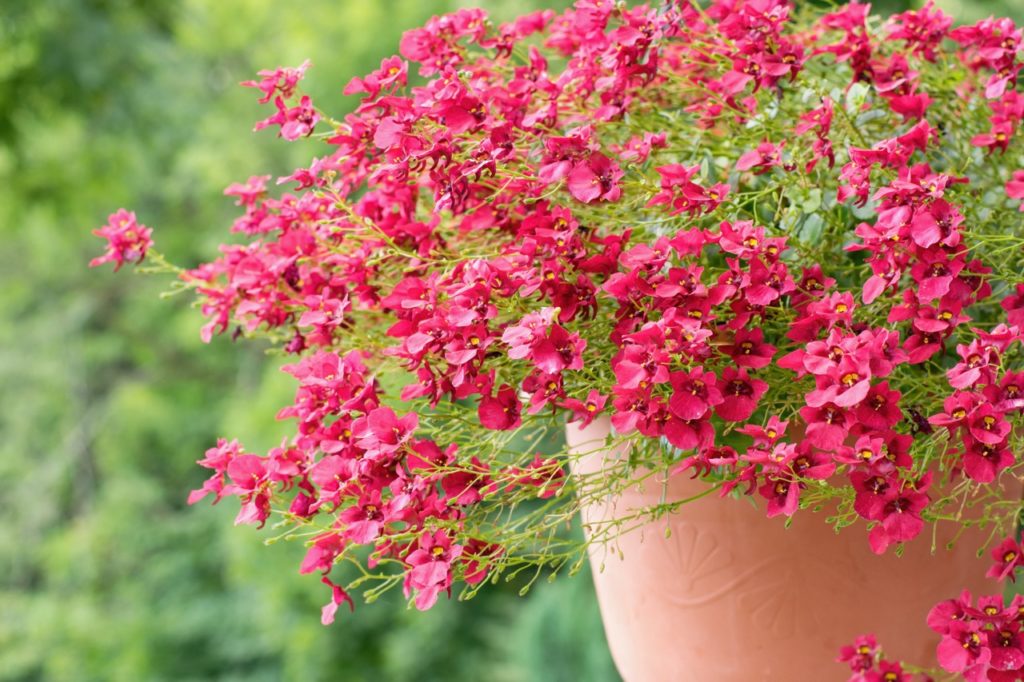
Whatever the habit or the size, the bilaterally-symmetrical flowers are typically only about 2cm wide and they are cup-shaped or bell-shaped.
The leaves are small and ovate, though the shade of green varies somewhat between the varieties, ranging from a bright mid-green to a rich dark green.
The flowers are white, and in various tones of pink and orange, particularly coral and apricot shades, through to near red.
Planting
The mat-forming types of diascias will make very attractive groundcover or edging plants, whilst the upright and bushy types will make pleasing and gentle companion plants for taller plants, and their flowers’ typically soft and pastel shades will set off plants with brightly coloured blooms.
All types of diascias will make great choices for borders because of their soothingly colourful floriferousness.
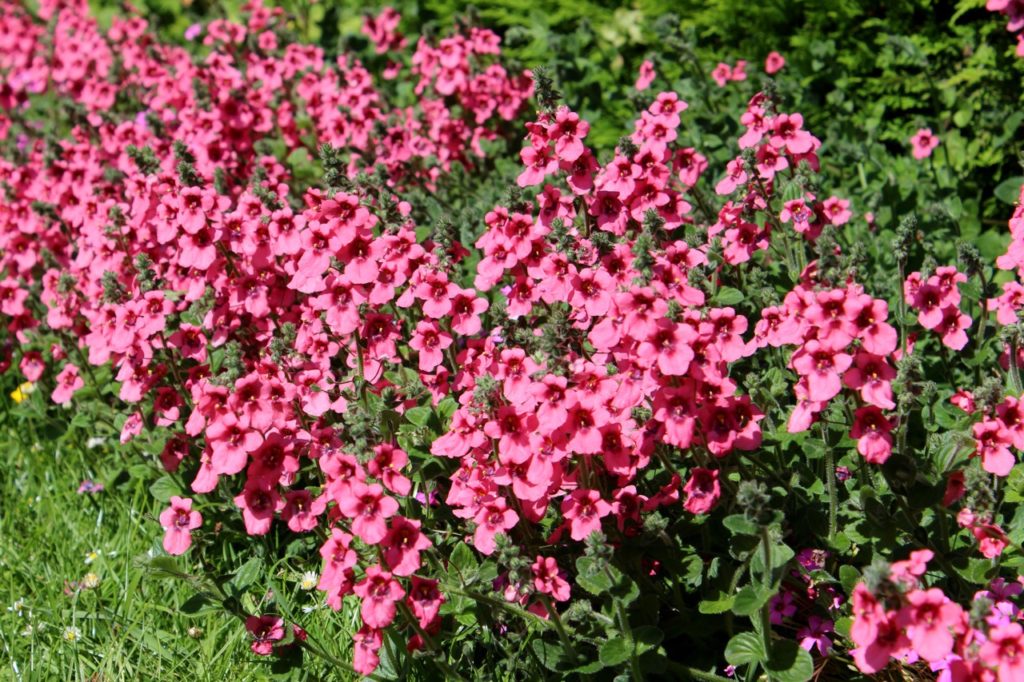
Any of the varieties that are on the small side are very well suited for rock gardens because of their diminutiveness and colourations, and also because of their spreading habit.
Finally, it is as container plants that diascias are experiencing a sharp rise in popularity.
With a cascade or cloud of a profusion of tiny blooms in soft shades look delightful streaming off a hanging basket or patio pot, it’s easy to see why.
Ongoing Care
Soil Requirements
The best type of soil for diascia is moderately fertile, light soil amended with organic material.
A free-draining loam amended with organic compost is ideal.
The soil should retain moisture but not stay waterlogged – it must drain well.
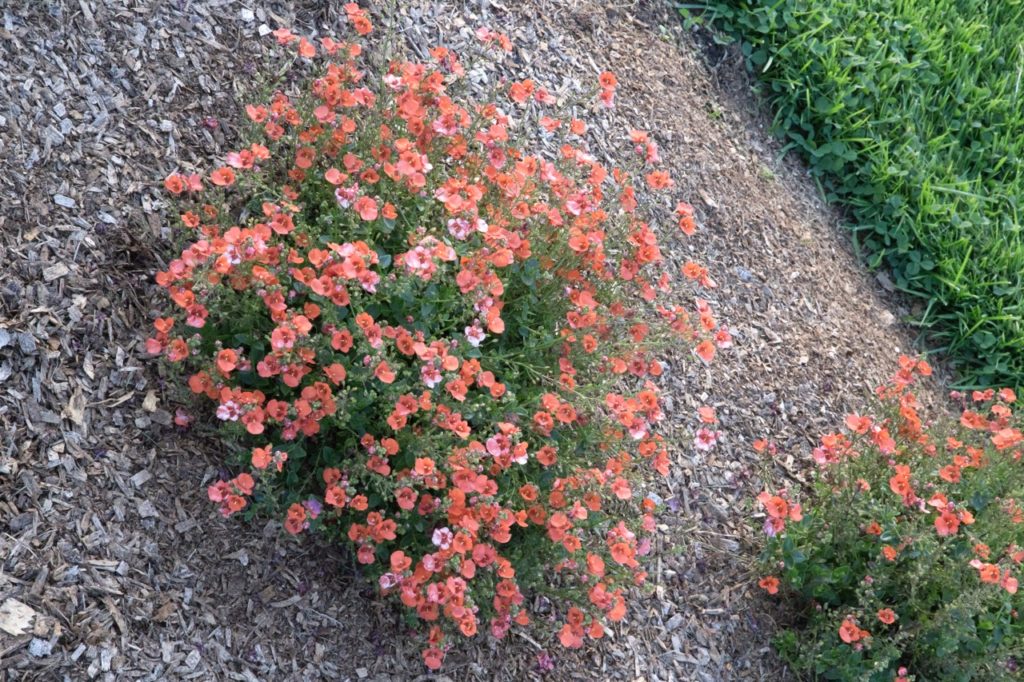
The best to accomplish this would be to incorporate plenty of organic matter such as compost in the planting hole and to mulch with more compost.
Sunlight
In most areas of the United Kingdom, diascias will do best in full sun, but if you’re in a milder region and you run into a sweltering summer, twinspur will be in a bit of a bother and will certainly stop flowering.
Container Growing
All varieties can be grown from seed and propagated from softwood cuttings while upright varieties can also be propagated by division.

However, the easiest and most common route for growing diascias is to obtain them as potted plants, which are widely available in numerous varieties.
If your preferred variety is not hardy enough to survive winter outdoors, the advantage to growing it in a container is that you can simply overwinter this small plant indoors in a sunny and warm spot, provided it is a perennial variety and not annual.
Propagating
To propagate from cuttings, take a softwood stem cutting of about 8cm.
Keep a pair of young leaves and remove the rest.
Trim the stem to just below a node.
Dampen the bottom of the cutting and dip in rooting hormone, or in honey followed by cinnamon.
Insert the cutting 2.5cm into potting compost and then water sufficiently to keep the compost damp.
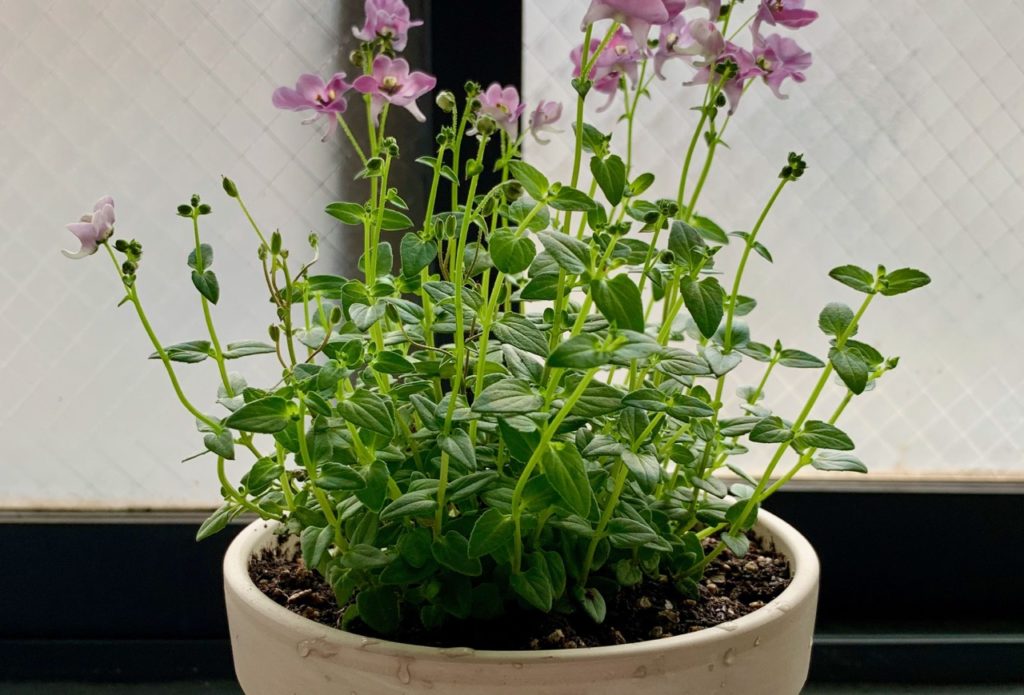
Seeds may be started indoors before spring and this is the choice alternative if you intend to grow potted plants.
They may also be sown directly outdoors after there is no threat of frost and temperatures stay above 10°C.
Seeds should be sown onto seed-sowing compost, very lightly covered with vermiculite or compost and kept in a light place between 15-20°C out of direct sunlight.
Sow seeds for mat-forming varieties 20-30cm apart, otherwise thin seedlings after they emerge.
Soil should be kept consistently moist and the seeds should sprout in about a fortnight.
Watering & Feeding
Diascias should be watered regularly but in moderation.
Keep the soil consistently moist but allow the top few centimetres to dry out every few days before watering again.
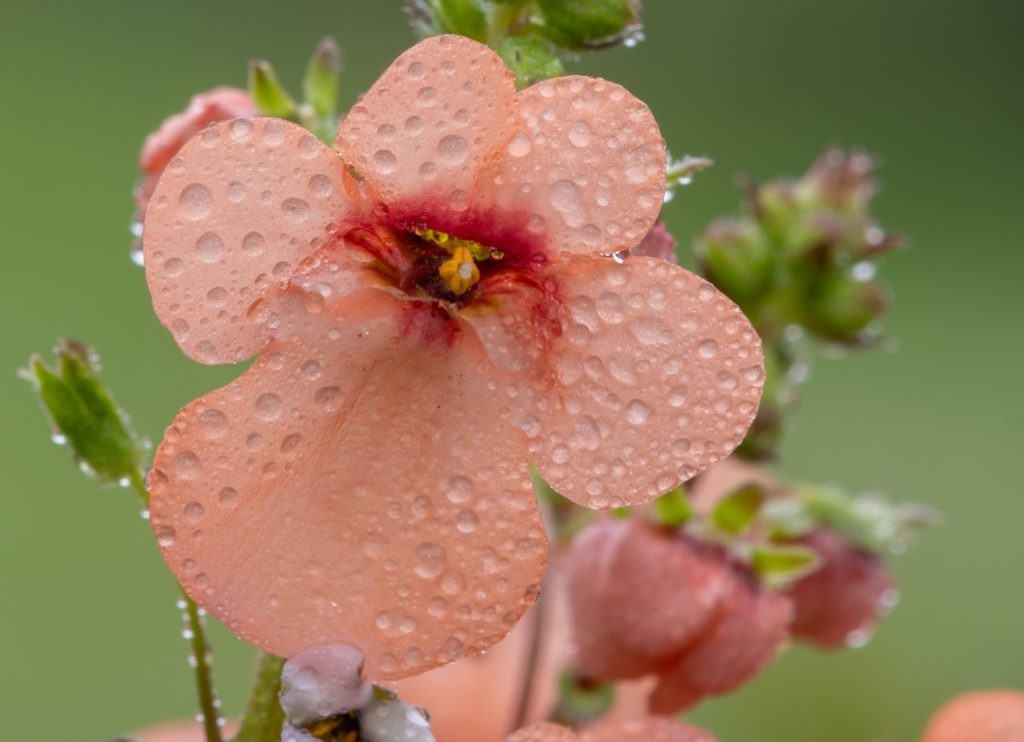
Diascias perform better when they are fed.
Either a regular balanced fertiliser applied once a month throughout the season or a slow-release balanced fertiliser applied in spring will suit these plants very well.
Be wary of applying fertiliser at the recommended strength for diascias; it will not hurt if the dilution is about 20% greater than what is recommended.
Pruning
No matter which kinds of diascias you grow, pinching the leaders of growing plants will result in bushier growth.
Doing so may especially benefit some of the newer upright varieties.
When plants are beginning to look leggy or otherwise when blooming tapers off in the dog days of summer, cut back the plants by about a 30-50% of their current growth.
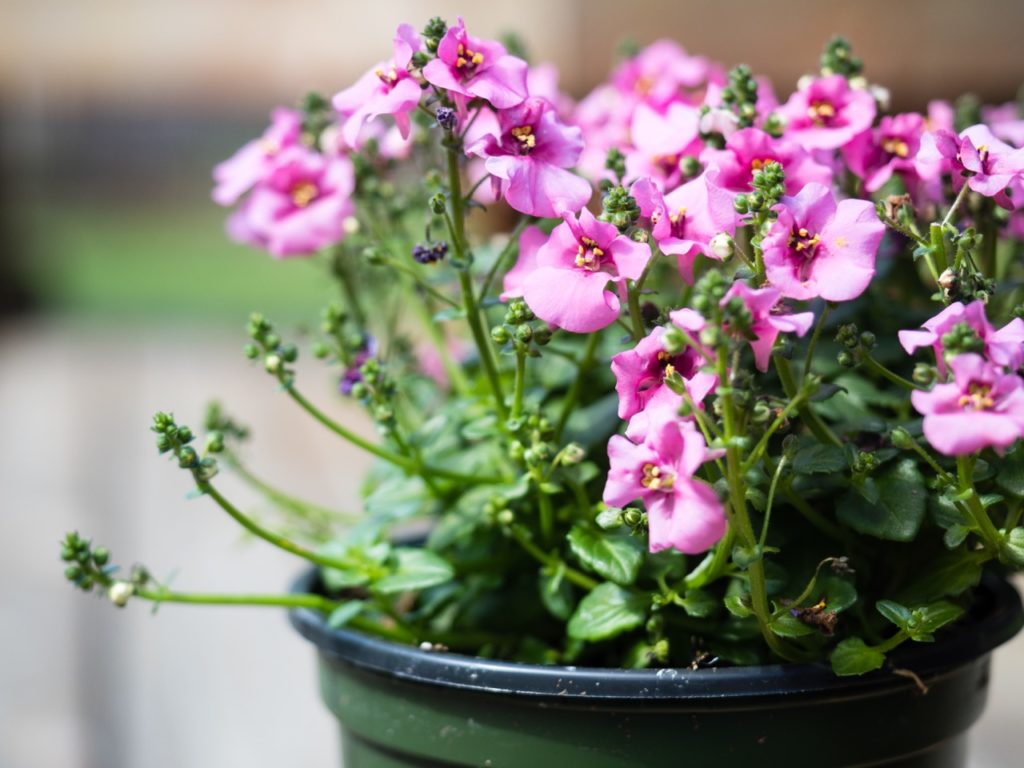
Doing so will trigger fresh growth and renewed blooming, particularly when you move into the end of summer and the weather starts to cool down.
If you are lucky enough to live in a region where you can grow diascias as outdoor perennials, you may divide the plants when they look hemmed-in or congested 2-3 years after they were planted.
Such division is best done in early spring.
Common Problems
One of the major plusses of these plants is that they are not susceptible to any worrying pests or diseases.

All you need to watch out for are snails and slugs which love to chew up diascia foliage.
“If this is an issue, organic solutions such as a mat of sheep wool on the soil surface or copper tape around the lips of containers can help to keep troublesome molluscs at bay,” says Master Horticulturist Roy Nicol.
References
- 1Diascia fetcaniensis. (2019, August 9). Cambridge Botanic Garden. Retrieved March 15, 2023, from https://www.botanic.cam.ac.uk/the-garden/plant-list/diascia-fetcaniensis/


